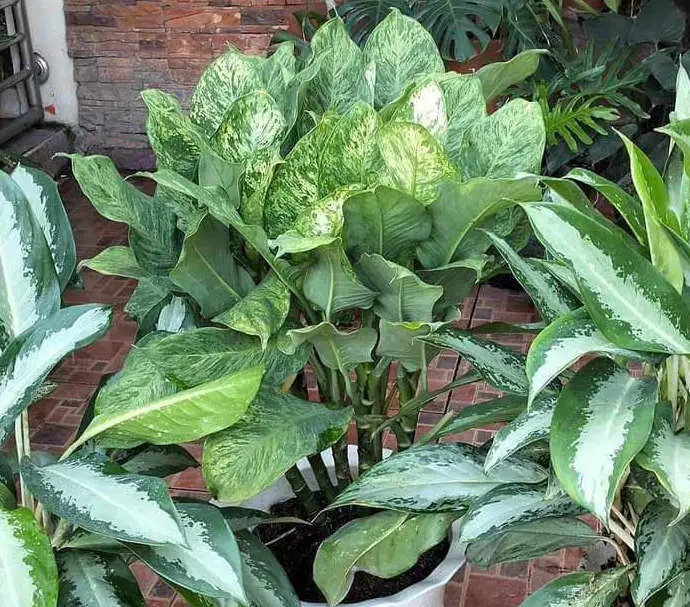Most people who grow dahlias know that they are prone to curling leaves, but not everyone knows why this happens. In the following article, we will discuss a few reasons for this problem and what you can do about it.
Why Are My Dahlia Leaves Curling?
Your dahlia leaves are curling due to overwatering, underwatering, or temperature stress.
It all comes down to the plant being stressed and not receiving the exact care it needs. Basically, your dahlia is communicating that it is unhappy with its current living conditions.
I will now go into the specifics of each cause and what you can do to prevent it from happening…
Overwatering
Overwatering is one of the most common causes of dahlia leaf curl. When roots are submerged in water, they cannot get enough oxygen and will begin to rot, which often leads to root death and can affect your plant’s leaves as well.
This problem can easily be prevented by checking on plants regularly (especially when new), using pots with drainage holes at the bottom, or adding rocks or gravel into pots to promote air circulation around their base.
To save an overwatered dahlia plant, you should stop watering it, allow the soil around its roots to dry out completely (for at least a week), and make sure that you do not overwater again in the future.
Underwatering
On the opposite side of things, underwatering can also cause your dahlia’s leaves to curl inwards. It does this to protect the plant from drying out. If this has happened, try watering your plants a little more frequently or adding something such as mulch to keep soil moist at all times.
You’ll know to water your dahlia if the top few inches of soil are dry to the touch. You can also use a moisture meter, which is a great way to tell if your plant needs water or not.
Temperature Stress
Regardless of whether you have been experiencing hot or cold weather in your area lately, temperature stress may be affecting your plants’ health as well.
While curling leaves due to high temperatures isn’t quite as common as some other causes mentioned here today, this problem does occur more often during the summer months when our outdoor air consistently hovers around 90 degrees Fahrenheit or higher.
You can prevent this by keeping your plants in a cooler area of the house or moving them outside into indirect sunlight.
FAQ
What if my plant has curled leaves but no apparent problem?
If you dahlia plant has curled leaf tips without any other underlying issue, it is most likely due to genetic mutation. If this happens to your plants, there’s nothing more that can be done at home and the best course of action would be to remove these leaves from the rest of the plant (to prevent diseases or pests from affecting healthy parts).
What about black spots on dahlia leaf tips?
Dahlia leaf spots are typically caused by fungal or bacterial infections. If you see these types of marks on your leaves, try removing the affected plant parts using household scissors, and be sure to wash any gardening tools that came in contact with infected areas right away (to prevent spreading this problem).
Will stress cause dahlia leaves to curl?
Yes, stress is another common cause of dahlia leaf curl. This can be caused by a number of things, such as temperature stress (extreme heat or cold), overwatering, underwatering, and more.
What if my dahlia’s leaves are curling downwards?
If you have an “upside down” type situation going on with your plants’ leaves in that they’re growing downward instead of upwards towards the sun, this typically means that there’s something wrong with their roots. In many cases where this occurs, it is due to root rot from being exposed to too much water.
Can dahlias get too much sun?
Yes – like most plants, dahlias need access to sunlight every day (in order for them to perform photosynthesis and produce energy) but excessive exposure can lead to damage, such as brown spots on leaves or curling around edges of the leaf.
Conclusion
In conclusion, leaf curl is a problem that most dahlia growers will encounter at some point or another. If you start to notice this symptom on your plant, then the first thing you should do is check for any of these common problems and treat them accordingly.
I hope you have enjoyed reading my blog post today. Be sure to search around my site for more ways you can keep your plants healthy and happy 🙂
Tim is an avid gardener from the UK. He was the founder of PlantCarer.com from 2021 to Sep 2023. He sold PlantCarer.com to Aaron. He has since started his own business called Seed To Supper, which provides new gardeners all the materials you need in a box (pots, seeds, compost and instructions) to grow your own delicious and nutritious vegetables and herbs from start to finish – no garden required.






0 Comments